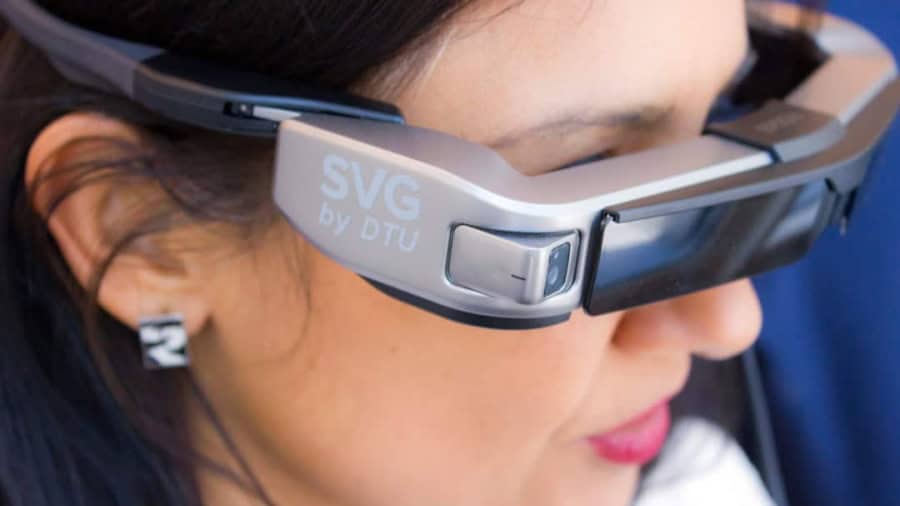Augmented Reality (AR) has emerged as a transformative force in various sectors, and its integration into the workplace is reshaping how businesses operate. By overlaying digital information onto the physical world, AR technology enhances the way employees interact with their environment, colleagues, and data. This innovative approach not only fosters creativity but also streamlines processes, making it an invaluable asset in modern office settings.
As organizations increasingly adopt AR-powered tools, they are discovering new ways to enhance collaboration, improve productivity, and facilitate training. The rise of AR in the workplace is driven by advancements in hardware and software, making it more accessible than ever before. With the proliferation of smartphones, tablets, and AR glasses, employees can easily engage with AR applications that cater to their specific needs.
This technology is not just a novelty; it is becoming a fundamental component of how businesses operate. As we delve deeper into the various applications of AR in the office, it becomes clear that its potential to revolutionize work processes is immense.
Key Takeaways
- AR-powered tech in the office is revolutionizing the way we work by integrating digital information into the physical environment.
- Streamlining communication and collaboration is made easier with AR-powered tools that enable real-time sharing of information and virtual meetings.
- AR-powered tools enhance productivity by providing hands-free access to information, step-by-step instructions, and remote assistance.
- Data visualization and analysis are simplified with AR-powered tools that overlay data onto physical objects, making it easier to understand and interpret complex information.
- AR-powered tech is revolutionizing training and onboarding processes by providing immersive and interactive experiences for new employees, improving retention and engagement.
Streamlining Communication and Collaboration
One of the most significant advantages of AR technology in the workplace is its ability to enhance communication and collaboration among team members. Traditional methods of communication often fall short in conveying complex ideas or visualizing intricate designs. However, AR allows users to share 3D models and interactive visuals in real-time, bridging the gap between remote and on-site employees.
This capability fosters a more inclusive environment where everyone can contribute to discussions and decision-making processes. Moreover, AR-powered collaboration tools enable teams to work together seamlessly, regardless of their physical location. For instance, virtual whiteboards and shared AR spaces allow team members to brainstorm ideas and visualize concepts collectively.
This immersive experience not only boosts engagement but also encourages creativity, as participants can manipulate digital objects and see their impact instantly. As a result, organizations can expect faster project completion times and improved outcomes due to enhanced teamwork.
Enhancing Productivity with AR-Powered Tools
AR technology has the potential to significantly boost productivity in the workplace by providing employees with tools that streamline their tasks. For instance, AR applications can assist workers in complex assembly processes by overlaying step-by-step instructions directly onto the equipment they are working on. This hands-free guidance minimizes errors and reduces the time spent searching for information, allowing employees to focus on their core responsibilities.
Additionally, AR can facilitate task management by integrating with existing project management software. Employees can visualize their workload through AR dashboards that display real-time updates on project statuses and deadlines. This level of transparency not only helps individuals prioritize their tasks but also fosters accountability within teams.
By leveraging AR-powered tools, organizations can create a more efficient workflow that ultimately leads to higher output and better results.
Simplifying Data Visualization and Analysis
In today’s data-driven world, the ability to analyze and visualize information effectively is crucial for informed decision-making. AR technology offers innovative solutions for data visualization that go beyond traditional charts and graphs. By transforming complex datasets into interactive 3D models, AR enables users to explore data from different angles and gain deeper insights into trends and patterns.
For example, businesses can utilize AR to visualize sales data by overlaying performance metrics onto physical products or locations. This approach allows stakeholders to see how various factors influence sales in real-time, leading to more strategic planning and resource allocation. Furthermore, AR can facilitate scenario modeling, enabling teams to simulate different outcomes based on varying inputs.
This capability empowers organizations to make data-driven decisions with greater confidence.
Revolutionizing Training and Onboarding Processes
Training and onboarding are critical components of any organization’s success, and AR technology is revolutionizing these processes by providing immersive learning experiences. Traditional training methods often rely on passive learning techniques that may not effectively engage employees. In contrast, AR offers interactive simulations that allow new hires to practice skills in a safe environment before applying them in real-world situations.
For instance, manufacturing companies can use AR to train employees on complex machinery by simulating operations in a virtual setting. This hands-on approach not only accelerates the learning curve but also enhances retention rates as employees actively participate in their training. Additionally, AR can provide real-time feedback during training sessions, allowing learners to correct mistakes immediately and build confidence in their abilities.
Improving Remote Work and Virtual Meetings
The shift towards remote work has highlighted the need for effective communication tools that can bridge the gap between distributed teams. AR technology plays a pivotal role in enhancing virtual meetings by creating immersive environments where participants can interact as if they were in the same room. This level of engagement fosters a sense of presence that traditional video conferencing tools often lack.
In virtual meetings powered by AR, participants can share 3D models or visual aids that everyone can manipulate in real-time. This interactive experience encourages collaboration and ensures that all team members are on the same page regarding project developments or brainstorming sessions. Furthermore, AR can help reduce meeting fatigue by making discussions more dynamic and visually stimulating, ultimately leading to more productive outcomes.
Addressing Security and Privacy Concerns
As with any emerging technology, the integration of AR into the workplace raises important security and privacy concerns that organizations must address proactively. The use of AR applications often involves sharing sensitive data or proprietary information, making it essential for businesses to implement robust security measures. Encryption protocols, secure access controls, and regular audits are critical components of an effective security strategy.
Moreover, organizations must educate employees about best practices for using AR technology safely. This includes understanding how to manage permissions for shared content and being aware of potential vulnerabilities associated with AR devices. By fostering a culture of security awareness, companies can mitigate risks while reaping the benefits of AR-powered tools.
The Potential Impact of AR-Powered Tech on the Future of Work
Looking ahead, the potential impact of AR-powered technology on the future of work is profound. As businesses continue to embrace digital transformation, AR will likely become an integral part of everyday operations across various industries. The ability to visualize data, enhance collaboration, and streamline processes will drive innovation and efficiency in ways we have yet to fully comprehend.
Furthermore, as AR technology evolves, we can expect even more sophisticated applications that will redefine how we approach work-related challenges. From advanced training simulations to enhanced customer interactions, the possibilities are limitless. As organizations adapt to this new landscape, they will need to remain agile and open-minded about integrating AR into their workflows.
In conclusion, augmented reality is not just a passing trend; it is a powerful tool that has the potential to reshape the workplace fundamentally. By streamlining communication, enhancing productivity, simplifying data visualization, revolutionizing training processes, improving remote work experiences, addressing security concerns, and paving the way for future innovations, AR-powered technology is poised to play a crucial role in the evolution of work as we know it. As businesses continue to explore its capabilities, they will unlock new opportunities for growth and success in an increasingly competitive landscape.
In a recent article on how smartwatches are enhancing connectivity, the potential for wearable technology to streamline communication and productivity in the workplace is explored. This aligns with the advancements in AR-powered tech discussed in “The Future of AR-Powered Tech for Simplifying Office Tasks,” as both technologies aim to simplify and enhance daily office tasks. The integration of smartwatches and AR-powered tools could revolutionize the way we work and collaborate in the future.
FAQs
What is AR-powered tech?
AR-powered tech, or augmented reality-powered technology, refers to technology that superimposes digital information such as images, videos, or 3D models onto the user’s view of the real world, typically through a device such as a smartphone or AR glasses.
How can AR-powered tech simplify office tasks?
AR-powered tech can simplify office tasks by providing hands-free access to information, enabling remote collaboration, facilitating training and onboarding processes, and improving productivity through real-time data visualization and analysis.
What are some examples of AR-powered tech for office tasks?
Examples of AR-powered tech for office tasks include AR glasses for hands-free access to information, AR apps for remote collaboration and virtual meetings, AR-powered training simulations, and AR-enhanced data visualization tools for analyzing complex datasets.
What are the potential benefits of using AR-powered tech in the office?
The potential benefits of using AR-powered tech in the office include increased efficiency and productivity, improved collaboration and communication, enhanced training and onboarding processes, and the ability to access and interact with real-time data in a more intuitive and immersive way.
What are some potential challenges or limitations of AR-powered tech for office tasks?
Some potential challenges or limitations of AR-powered tech for office tasks include the need for adequate training and support for users, concerns about privacy and data security, potential technical issues or compatibility issues with existing systems, and the cost of implementing and maintaining AR-powered technology.



